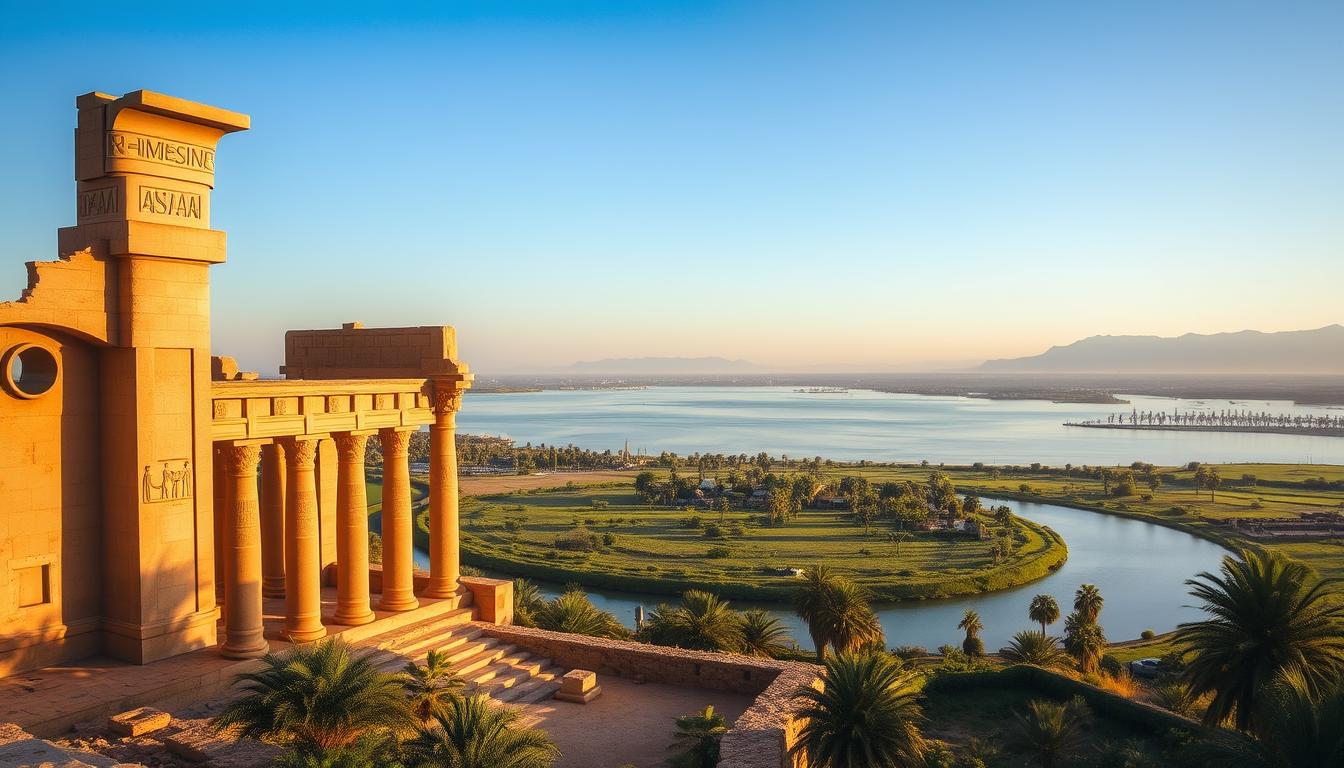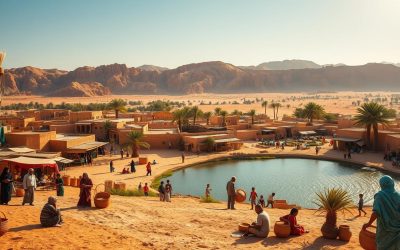Have you ever wondered what it feels like to step into a world where ancient history meets modern charm? Dandarah offers just that—a captivating blend of timeless wonders and contemporary delights. This hidden gem is a treasure trove of cultural richness and historical marvels, waiting to be explored.
From the majestic temples that whisper stories of the past to the serene beauty of the Nile, this destination promises an unforgettable journey. Whether you’re a history enthusiast or a curious traveler, there’s something here for everyone. Get ready to uncover the secrets of this enchanting place and create memories that will last a lifetime.
This guide is your ultimate companion, offering step-by-step insights into the must-see attractions and hidden gems. Let’s embark on an adventure that bridges the past and present, revealing the true essence of this remarkable destination.
Key Takeaways
- Discover the rich cultural and historical heritage of Dandarah.
- Explore ancient temples and breathtaking views along the Nile.
- Experience a perfect blend of history and modern travel insights.
- Find top recommendations for an unforgettable journey.
- Prepare for a trip that connects the past with the present.
Discover Dandarah’s Iconic Temples and Historical Sites
Discover the timeless beauty of ancient temples that have stood for centuries. These structures are more than just stone and mortar—they are windows into a civilization that thrived thousands of years ago. From intricate carvings to towering columns, every detail tells a story of faith, power, and artistry.
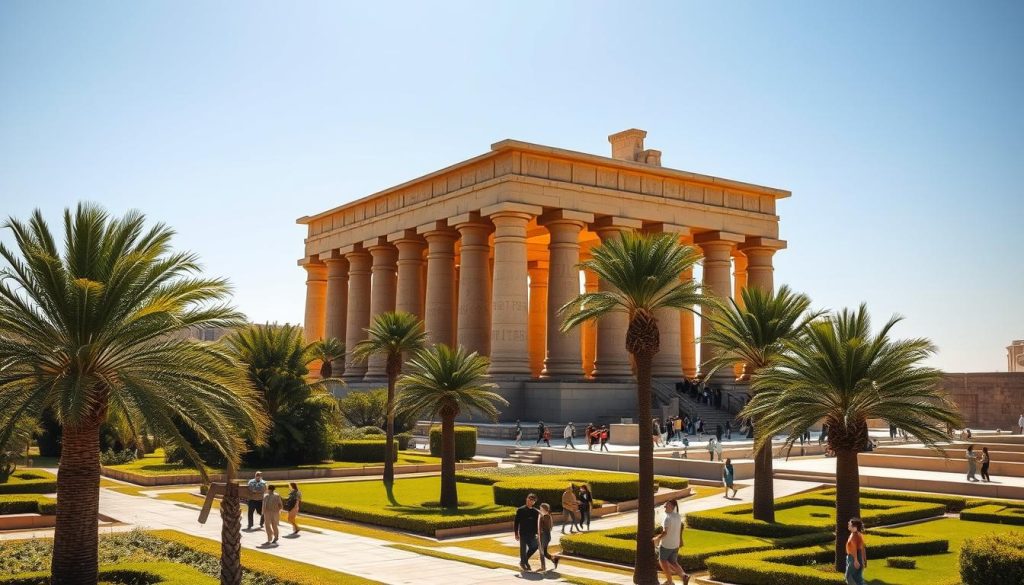
Uncover Ancient Temple Complexes
One of the most remarkable sites is the Dendera temple complex, a masterpiece of ancient architecture. Recently, restoration efforts have revealed vibrant paintings on its ceiling, offering a glimpse into the artistry of the past. This temple, dedicated to the goddess Hathor, is a testament to the religious devotion of the Ptolemaic period.
As you walk through its halls, you’ll notice the intricate carvings and hieroglyphs that adorn the walls. These details highlight the skill and dedication of the craftsmen who built this monument. The temple’s preservation allows visitors to connect with the history and culture of ancient times.
Explore Historical Monuments and Relics
Beyond Dendera, other sites like Karnak showcase the grandeur of ancient Egyptian architecture. These complexes were not just places of worship but also centers of community and culture. Each site offers a unique perspective on the history and traditions of the region.
From towering obelisks to detailed reliefs, every monument tells a story. The Ptolemaic influence is evident in the design and purpose of these structures, reflecting a blend of Egyptian and Hellenistic styles. Exploring these relics is like stepping back in time, offering a deeper understanding of a civilization that shaped the world.
“The temples of ancient Egypt are not just buildings; they are the soul of a civilization that continues to inspire awe.”
Whether you’re a history enthusiast or a curious traveler, these temple sites offer an unforgettable journey. They invite you to explore the layers of history and appreciate the legacy of a culture that has endured for millennia.
Experience the Magic of the Nile and Luxurious Cruises
The Nile River has long been a symbol of life and adventure, offering travelers a unique way to explore its timeless beauty. Whether you’re gliding on a traditional felucca or enjoying the comforts of a modern cruise, the river promises an unforgettable journey. Let’s dive into the experiences that make the Nile a must-see destination.

Sail on a Traditional Felucca
There’s nothing quite like sailing on a traditional felucca, a wooden sailboat that has been used on the Nile for centuries. These rides offer a peaceful way to take in the stunning landscapes and connect with the river’s rich history. As you drift along, you’ll pass by ancient sites and lush greenery, creating a sense of timelessness.
For an authentic experience, consider booking a felucca tour in Luxor or Aswan. These rides are perfect for those who want to slow down and savor the moment. Don’t forget to bring a camera—the views are truly breathtaking.
Enjoy Sunset Views on the River
One of the most magical moments on the Nile is watching the sunset from the water. The sky transforms into a canvas of warm hues, reflecting off the river’s surface. Whether you’re on a felucca or a luxurious cruise, this is a moment you’ll never forget.
For the best experience, plan your tour in the late afternoon. Many Nile cruises offer sunset packages, complete with refreshments and live music. It’s the perfect way to end a day of exploration.
“The Nile is not just a river; it’s a journey through time, offering a glimpse into the heart of a civilization.”
From traditional feluccas to modern cruises, the Nile offers something for everyone. Whether you’re seeking adventure or relaxation, this iconic river will leave you with memories to last a lifetime.
Dandarah, Egypt: Best Things to Do – Top Picks
Step into a world where ancient wonders and modern travel seamlessly blend. This section highlights the top-rated attractions that capture the essence of Egyptian splendor. From awe-inspiring temples to immersive tours, these sites offer a journey through time.
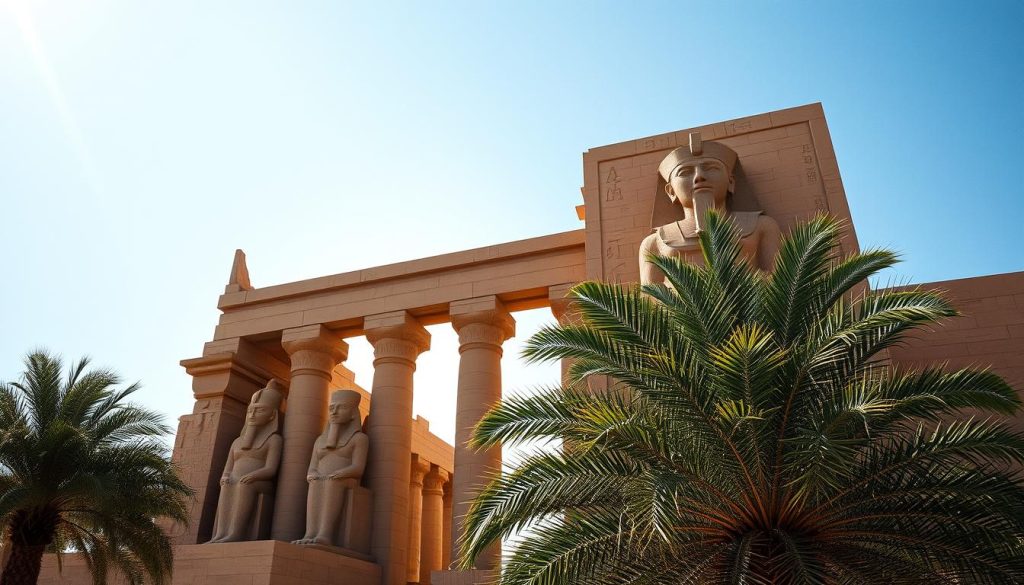
Majesty of Abu Simbel
The twin temples of Abu Simbel are a testament to ancient ingenuity. Carved into the mountainside, these structures showcase the grandeur of the New Kingdom era. The colossal statues of Ramses II guard the entrance, leaving visitors in awe.
What makes this site unique is its relocation history. In the 1960s, the entire complex was moved to save it from flooding caused by the Aswan High Dam. This feat of engineering adds another layer of fascination to your trip.
Philae Temple: A Jewel on the Nile
Perched on an island, the Philae Temple is a masterpiece of ancient architecture. Dedicated to the goddess Isis, it’s renowned for its intricate carvings and serene setting. Like Abu Simbel, it was relocated to preserve its beauty.
Exploring Philae feels like stepping into a sacred space. The temple’s columns and courtyards are adorned with hieroglyphs that tell stories of devotion and power. A guide can help you decode these ancient messages, enriching your visit.
“The temples of Egypt are not just relics; they are gateways to understanding a civilization that shaped the world.”
Practical Tips for Your Visit
Planning your trip around these attractions ensures you don’t miss a thing. Start early to avoid crowds and make the most of your day. Hiring a knowledgeable guide can provide historical context and insider tips.
For a seamless experience, consider booking a tour that includes both Abu Simbel and Philae. These packages often include transportation and meals, making your journey hassle-free.
Whether you’re marveling at the scale of Abu Simbel or soaking in the tranquility of Philae, these attractions promise an unforgettable adventure. Let them inspire your next trip to Egypt.
Plan Your Ultimate Egyptian Adventure
Planning a trip to explore ancient wonders and vibrant culture can be both exciting and overwhelming. To make the most of your day, we’ve crafted a sample itinerary that ensures you hit all the must-see attractions. From iconic temples to fascinating museums, this guide will help you navigate your adventure with ease.
Sample Itinerary for an Unforgettable Day
Start your day early with a visit to the Nubian Museum in Aswan. This museum offers a deep dive into the rich history and culture of the Nubian people. Next, head to the Philae Temple, a stunning island temple dedicated to the goddess Isis. Its intricate carvings and serene setting make it a highlight of any trip.
After lunch, explore the Unfinished Obelisk, a fascinating glimpse into ancient stone-cutting techniques. End your day with a leisurely stroll through Aswan’s vibrant local markets, where you can shop for unique souvenirs and enjoy authentic Egyptian cuisine.
Must-See Attractions and Remarkable Day Trips
For those with more time, consider extending your adventure with a day trip to Luxor. Visit the Valley of the Kings, home to the tombs of ancient pharaohs, and marvel at the grandeur of the Karnak Temple complex. Each site offers a unique perspective on Egypt’s rich history.
Using a knowledgeable guide can enhance your experience, providing historical context and insider tips. Many tours also include transportation and meals, making your journey hassle-free.
| Time | Activity | Location |
|---|---|---|
| 8:00 AM | Visit Nubian Museum | Aswan |
| 10:00 AM | Explore Philae Temple | Philae Island |
| 1:00 PM | Lunch Break | Aswan |
| 2:30 PM | Tour Unfinished Obelisk | Aswan |
| 4:30 PM | Visit Local Markets | Aswan |
“Exploring Egypt is like stepping into a living museum, where every corner tells a story of a civilization that shaped the world.”
Whether you’re marveling at ancient temples or soaking in the vibrant culture, this itinerary ensures every minute of your day is filled with discovery. Let it inspire your next adventure in this remarkable land.
Insider Tips and Local Experiences in Egypt
Exploring Egypt goes beyond the iconic landmarks—it’s about uncovering the hidden gems and local secrets that make your journey unforgettable. From savoring authentic cuisine to staying in historic hotels, these insider tips will help you experience the country like a local.
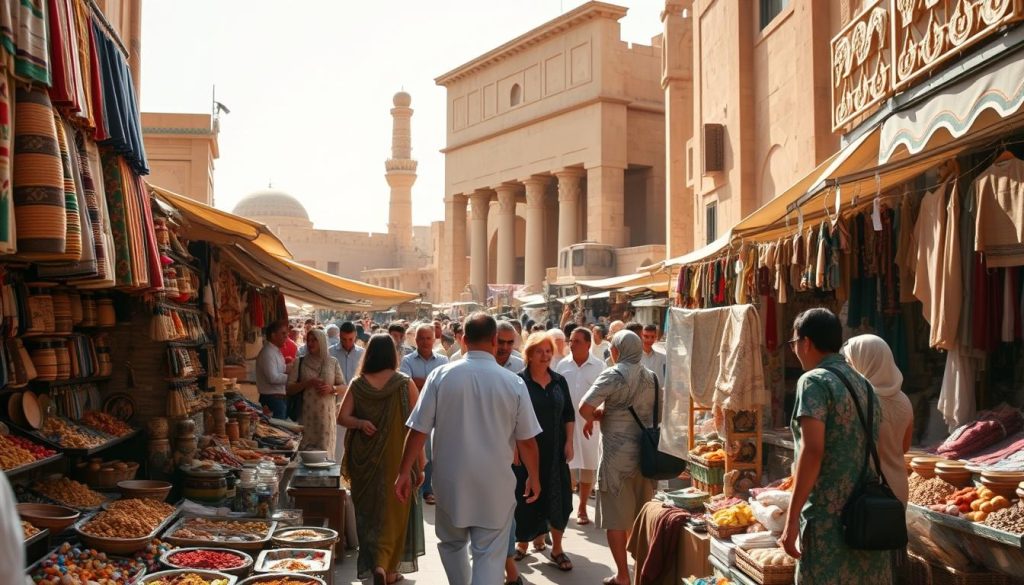
Local Dining, Hotels, and Hidden Gems
When it comes to dining, Cairo offers a mix of traditional and modern flavors. Head to Al Dokka for a taste of authentic Egyptian dishes in a cozy setting. For a luxurious stay, the Sofitel Old Cataract Hotel in Aswan combines elegance with history, offering stunning views of the Nile.
Don’t miss the lesser-known spots like Kom Ombo, where you can explore the temple dedicated to two gods. It’s a quieter alternative to the more crowded sites. In Hurghada, the vibrant coral reefs make it a paradise for divers and snorkelers.
Navigating Egypt with Expert Guidance
Getting around Egypt can be overwhelming, but a knowledgeable guide can make all the difference. They’ll help you navigate bustling cities like Cairo and uncover the stories behind each site. Whether you’re exploring the temples of Kom Ombo or strolling through local markets, a guide ensures you don’t miss a thing.
For a seamless experience, consider hiring a person who specializes in private tours. They can tailor your itinerary to include hidden gems and provide insider tips that only locals know.
| Tip | Location | Why It’s Worth It |
|---|---|---|
| Dine at Al Dokka | Cairo | Authentic Egyptian cuisine in a cozy setting |
| Stay at Sofitel Old Cataract | Aswan | Luxury with a historic charm and Nile views |
| Visit Kom Ombo Temple | Kom Ombo | Less crowded and dedicated to two gods |
| Explore Hurghada’s Reefs | Hurghada | Vibrant coral reefs for diving and snorkeling |
“The best way to experience Egypt is through the eyes of a local—they’ll show you the hidden treasures that make the journey unforgettable.”
With these insider tips, you’ll not only see the iconic landmarks but also discover the heart and soul of this remarkable land. From delicious meals to unique stays, every part of your trip will be filled with unforgettable memories.
Conclusion
Your journey through this land is a bridge between ancient marvels and modern discoveries. From the awe-inspiring Valley of the Kings to the grandeur of Karnak Temple, every moment connects you to a rich history that shaped the world. This adventure is more than a trip—it’s a journey through time.
Revisit iconic sites and uncover hidden gems that tell stories of a civilization’s brilliance. Thoughtful planning and insider tips can transform your experience, making it seamless and unforgettable. Start crafting your itinerary today and let this magical destination inspire your next adventure.
As you reflect on your travels, remember that every step in Egypt is a discovery. From the timeless wonders to the vibrant culture, this land leaves a lasting impression. Embrace the beauty and depth of its heritage, and let it fuel your curiosity for future explorations.
The above is subject to change.
Check back often to TRAVEL.COM for the latest travel tips and deals.
Here are some Tours & Sightseeing suggestions that might pique your interests!
